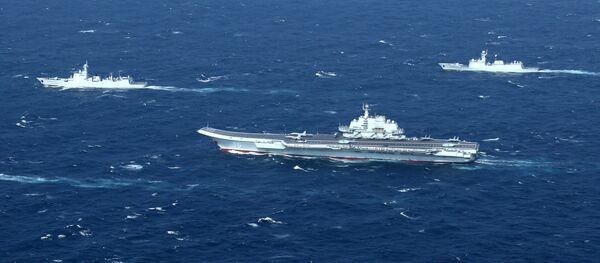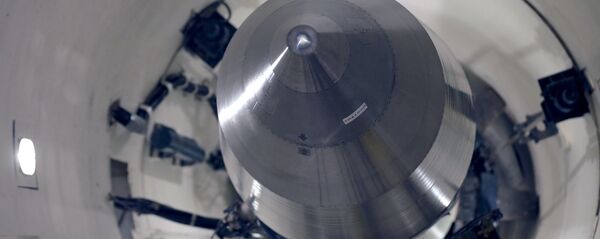The vessel launched Wednesday was the second Type 001A vessel to be built, but the first produced from scratch in China itself. Measuring 315 meters long and 75 meters wide, the Chinese carrier displaces 70,000 tons of water, and was built at the Dalian Shipyard, a port in northern China's Liaoning Province.
Chinese aircraft carrier launching pic.twitter.com/xFbOpQ6fif
— Romeway Anti-mold (@TechRomeway) 26 апреля 2017 г.
Beijing commissioned its first aircraft carrier, the Liaoning, in 2012. That vessel was originally laid down in the Soviet Union, and categorized as a heavy aircraft carrying cruiser. China purchased the unfinished vessel from Ukraine for $25 million after the collapse of the USSR.
Type 001A, China's 1st home-built aircraft carrier, has been launched, 26 Apr 2017. pic.twitter.com/KcbjtGAVrH
— Winston Gin (@ufeellucky) 26 апреля 2017 г.
Commenting on the new aircraft carrier's potential role in the Chinese Navy, Russian military observer Vasily Kashin explained that the new vessel is part of just the first stage in the People's Liberation Navy's carrier development plans.
"The Chinese carrier program will likely develop in two stages," the expert noted. "In the first stage, China is striving to build three aircraft carriers (including the already-commissioned Liaoning), which are a development on the Soviet Union's Project 1143.6. These will be ships with non-nuclear power plants, and a springboard take-off system for its aircraft, although the third of the ships is likely to also be equipped with a steam catapult."
Kashin estimates that the first Chinese-built Type 001A carrier, launched Wednesday, will be commissioned around the year 2020. "The second 'fully Chinese' aircraft carrier is currently being built in Shanghai. When completed and commissioned, China will be able to provide each of its three fleet commands, the North Sea Fleet, the East Sea Fleet and the South Sea Fleet, with an aircraft carrier."
"In the second stage, China will switch to the construction of 'American-style' nuclear-powered aircraft carrier, although the first such vessel will probably join the fleet closer to the mid-2020s," the expert noted.
"Unlike US nuclear-powered carriers, Soviet aircraft-carrying ships from Project 1143, including the sole Russian aircraft carrier – the Admiral Kuznetsov, were not designed with global power projection capabilities in mind. The Admiral Kuznetsov participated in the Russian military operation in Syria, demonstrating that it is capable of handling such tasks, but also that it is not ideally suited for them."
Soviet carriers, Kashin noted, were designed "to provide the Soviet fleet with naval superiority in strategically important areas around the USSR itself." The carriers helped to protect patrolling nuclear missile submarines, and to defend the country's costs.
"The first three Chinese aircraft carriers will be tasked with solving similar problems" in the Chinese Navy's East, South and North Sea Fleets. "This will allow the Navy to deploy its submarine forces at an early stage in a potential conflict, will provide the opportunity to monitor the movement of enemy surface ships, and effectively use coastal aviation and ballistic anti-ship missiles in the first hours of war. The presence of a carrier in the South China Sea will make it difficult to make a preemptive strike against the Chinese nuclear missile submarines located there."
Finally, "as the Admiral Kuznetsov's experience has shown, such ships can if necessary be used to protect Chinese interests and Chinese citizens in unstable areas in Africa or the Middle East in the event of crises there. The carriers will provide the Chinese Navy with a freedom of action in the Indian Ocean, and help protect the strategically important Chinese [shipping] lanes passing through these waters."
"Thus, the three Chinese carriers of the 'Soviet type' will be a useful addition to the Chinese fleet, particularly in terms of the expanded capabilities they provide China in the western part of the Pacific Ocean. But in the long term, the future of the Chinese Navy will be linked to large nuclear-powered carriers," Kashin concluded.



